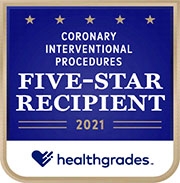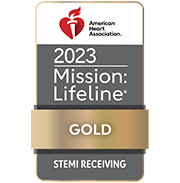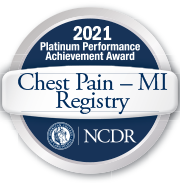Interventional Cardiology

NewYork-Presbyterian Queens is a Healthgrades® Five-Star Recipient for Coronary Interventional Procedures in 2021.
Interventional cardiology involves the treatment of heart disease by catheter-based minimally invasive techniques. The NewYork-Presbyterian Queens Cardiac Catheterization Lab is the centerpiece of our cardiovascular program and has been awarded the Mission: Lifeline® Gold Award by the American Heart Association (AHA) for outstanding speed of treatment for patients experiencing a heart attack.
Our state-of-the-art lab, newly upgraded with technology to improve imaging and reduce radiation exposure, provides diagnostic and interventional procedures for coronary artery disease, peripheral vascular disease, and emergency treatment for heart attack patients. Our services include:
- Diagnostic coronary and peripheral angiograms
- Interventions (angioplasty and stenting)
- Advanced interventional techniques with laser and rotational atherectomy
- Right heart catheterization
- Advanced mechanical circulatory support placement with intra-aortic balloon pump (IABP)
- Percutaneous left ventricular assist device (Impella)
What is Cardiac Catheterization?
A cardiac catheterization is a procedure used to diagnose and treat some types of heart disease. The procedure is done under local anesthesia, with medication also administered to help the patient feel comfortable and relaxed.
During the procedure, the physician will pass a thin plastic tube from an artery in the forearm or leg into the heart. X-ray images of the arteries will be taken of the heart to detect any blockages and to determine how well the heart is pumping. The test usually lasts about 30 minutes to one hour.
If the physician detects significant blockages, treating that blockage with balloon inflations and/or stent placement may be considered. A coronary stent is a small mesh tube, usually made of metal, which is expanded in a blockage to keep it open.
How Patients Should Prepare for the Test
The physician will explain the purpose of the test to the patient, and blood work will be obtained prior to the procedure. The patient will receive a telephone call from our cath lab staff to schedule an appointment for the procedure and provide instructions.
Typically, the patient will be advised not to eat anything on the morning of the procedure,though medications may be taken with a little water. The patient will be given instructions on any medications that should not be taken one to two days prior to the procedure, such as blood thinners.
What Patients Should Expect on the Day of the Test
Most elective catheterization and stent procedures are same-day procedures. After arriving at the hospital, the patient will meet a team of cath lab nurses and nurse practitioners who will prepare them for the procedure. The physician will also greet the patient and their family to answer any remaining questions.
Upon entering the procedure room, the forearm and leg will be cleaned with an antiseptic solution and a sterile drape will be placed over the area. At the same time, IV sedation medications will be given to relax and make the patient feel more comfortable.
If the procedure is done from the arm, a bracelet is placed on the site at the conclusion of the procedure to hold pressure for approximately two hours to let the artery access point close. If the procedure is done from the leg, the access site is typically closed in the lab at the conclusion of the procedure.
What Patients Should Expect After the Procedure
Following the procedure, the patient will return to the recovery area, and will be allowed to eat and visit with family. A cardiac monitor will be placed on the patient and monitored directly by a nurse and a nurse practitioner for the remainder of their stay.
Most patients are able to go home three to six hours after the conclusion of the procedure. Since sedation is used during the procedure, driving is not recommended for the patient when released to go home.
Prior to discharge, the patient will be given written instructions on activity, medications, any new follow-up appointments, and who to call with any questions or concerns. If any new medications are prescribed, they will be explained to the patient and prescriptions will be sent directly to the pharmacy. The patient will also receive a follow-up telephone call to answer any further questions or concerns.
Awards & Recognition





